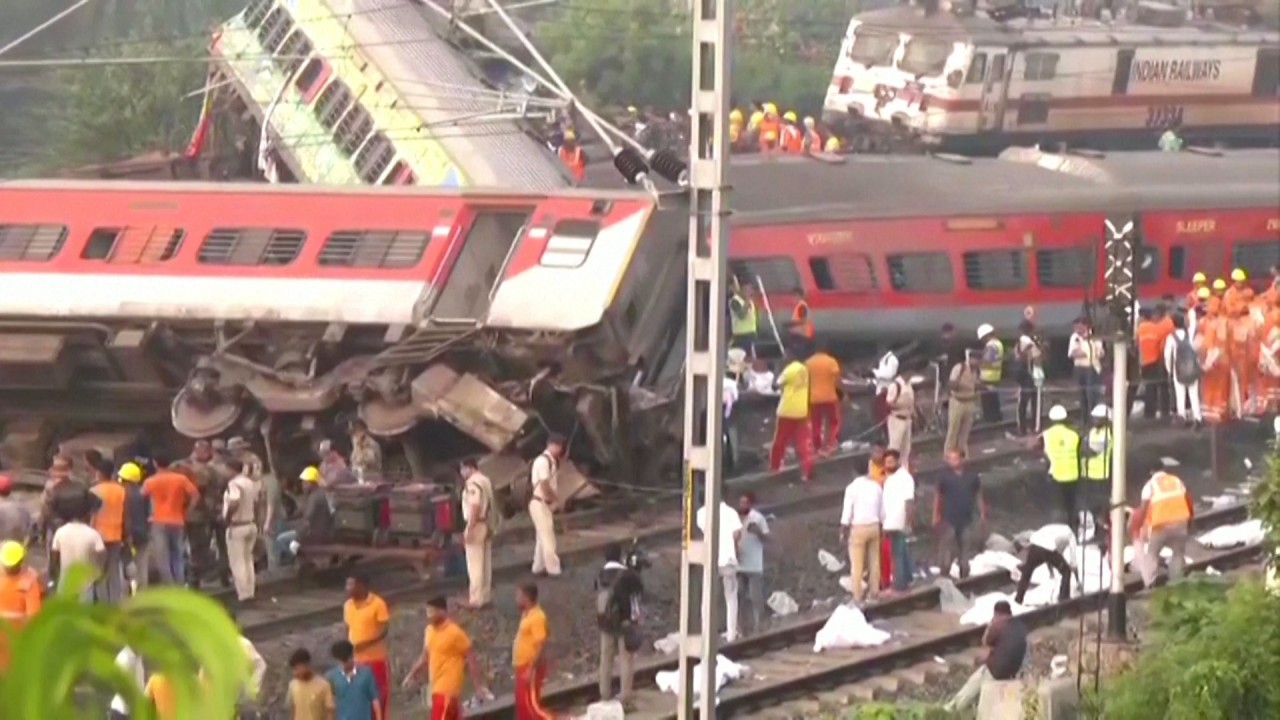India’s deadly train crash renews questions over safety as government pushes railway upgrade
- From 2017 to 2021, there were more than 100,000 train-related deaths in India, according to a 2022 report published by the National Crime Records Bureau
- Official data also suggests derailments are the most common form of rail accidents in India, but have been on a decline in recent years

India’s prime minister had been expected to inaugurate an electrical semi-high-speed train equipped with a safety feature – another step in the modernisation of an antiquated railway that is the lifeline of the world’s most populous nation.
Instead on Saturday, Narendra Modi travelled to eastern Odisha state to deal with one of the country’s worst train disasters that left over 280 dead and hundreds injured. The massive derailment on Friday night involving two passenger trains is a stark reminder of safety issues that continue to challenge the vast railway system that transports nearly 22 million passengers each day.
India, a country of 1.42 billion people, has one of the world’s most extensive and complicated railways built during the British colonial era: more than 40,000 miles (64,000 kilometres) of tracks, 14,000 passenger trains and 8,000 stations. Spread across the country from the Himalayas in the north to the beaches in the south, it is also a system that is weakened by decades of mismanagement and neglect. Despite efforts to improve safety, several hundred accidents happen every year.

From 2017 to 2021, there were more than 100,000 train-related deaths in India, according to a 2022 report published by the National Crime Records Bureau. That figure includes cases in which passengers fell from the trains, collisions, and people being mowed by speeding trains on the tracks.
Official data also suggests derailments are the most common form of rail accidents in India, but have been on a decline in recent years.
According to India’s Comptroller and Auditor General, Indian Railways recorded 2,017 accidents from 2017 to 2021. Derailments accounted for 69 per cent of the accidents, resulting in 293 deaths.
The report found multiple factors including track defects, maintenance issues, outdated signalling equipment, and human errors as main causes of the derailments. It also said lack of money or non-utilisation of available funds for track restorations led to 26 per cent of the accidents.
